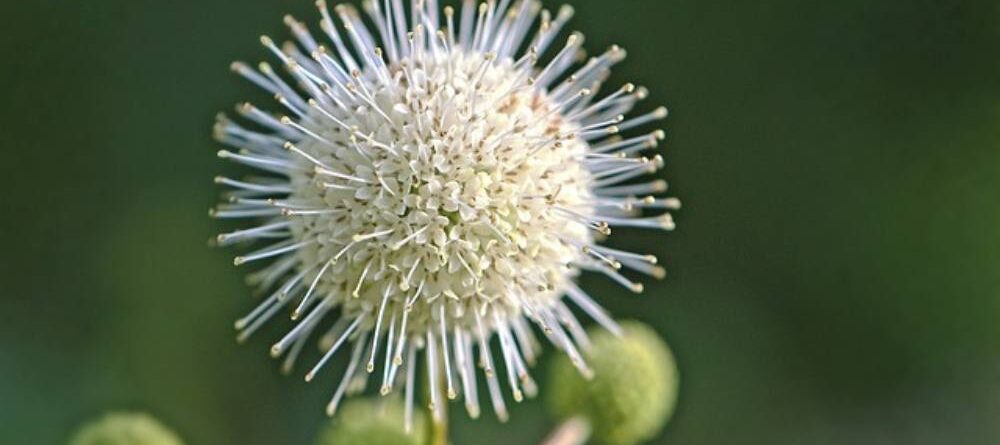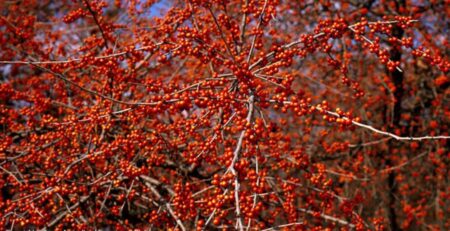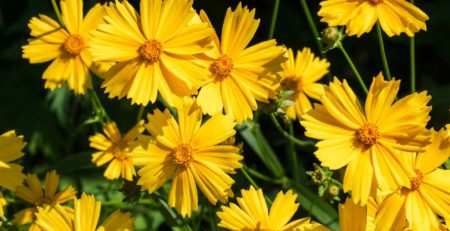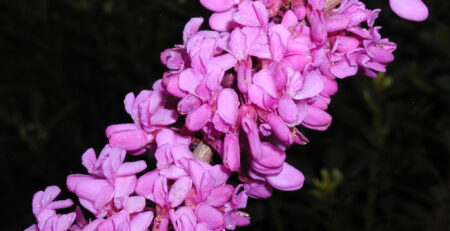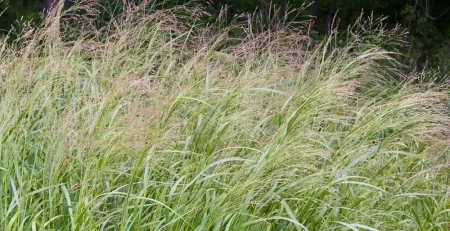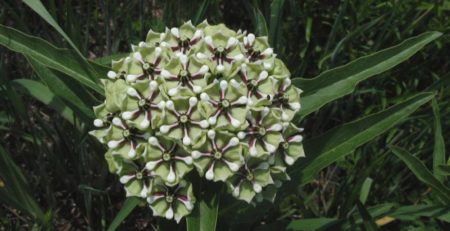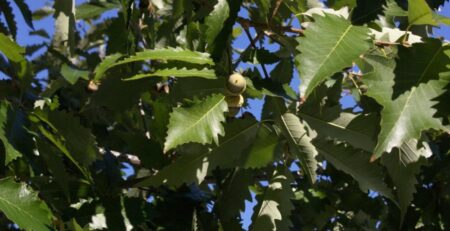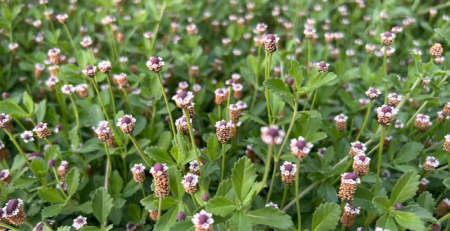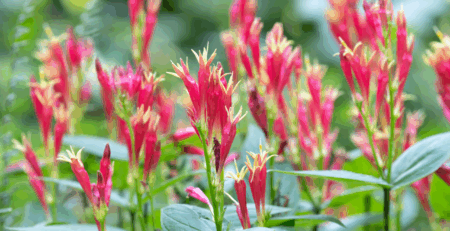Cephalanthus occidentalis, Buttonbush
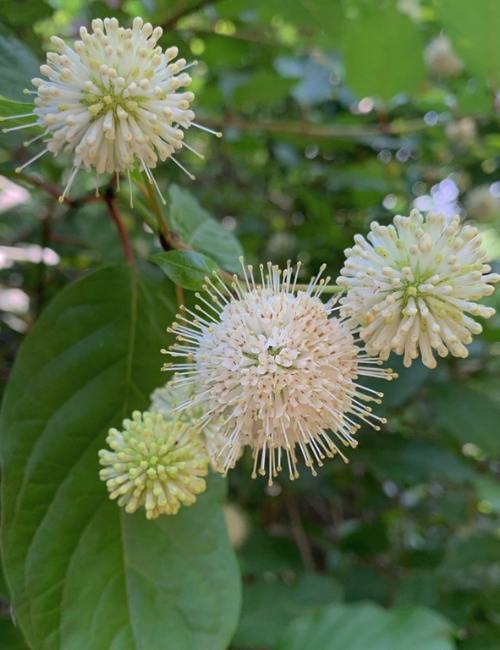

Botanical Name: Cephalanthus occidentalis
Common Name: Buttonbush
Synonyms:
Category: Shrub
Family: Rubiaceae
Lifecycle: Perennial
Lifecycle (Alt):
USDA Symbol: CEOC2
Hardiness Zone North: 5A
Hardiness Zone South: 10B
Sun Requirement: Full Sun (6+ hours of sunlight)
Sun Requirement (Alt): Parital Shade (2-4 hours of sunlight)
Water Requirement: Medium
Growth Rate: Moderate
Maintenance: Low
Plant Adult Height: 6-12ft
Plant Adult Spread: 6-12ft
Plant Spacing: 6-12ft
Soil Preference: Adaptable
Soil pH Preference: Slightly Acidic (6.1-6.5)
Propagation: Seed, Stem Cutting
Attracts: Bees, Birds, Butterflies, Hummingbirds, Moths
Resists: Disease
Tolerates: Freeze, Erosion, Clay Soil, Wet Soil, Heat
Miscellaneous: Tolerates Poor Soil, Native, Poisonous to Humans, Toxic to Pets & Animals
Description: Buttonbush, scientifically known as Cephalanthus occidentalis, is a unique and visually striking shrub prized for its distinctive spherical, pincushion-like white or pale pink flowers that bloom from late spring to early fall. This shrub is especially valued for its ability to thrive in wet conditions, making it an excellent choice for rain gardens, waterside plantings, or other moist areas in the landscape. Buttonbush is also highly tolerant of flooding and is commonly used to stabilize shorelines and prevent erosion. The plant’s blooms are not only visually appealing but are also highly attractive to a variety of pollinators including bees, butterflies, and hummingbirds, thus supporting local ecosystems. Additionally, it provides food and shelter for various wildlife, enhancing its ecological value. Buttonbush is generally resistant to pests and diseases, making it a low-maintenance option for gardeners looking for resilient plant choices. However, it is important to note that all parts of the plant are toxic if ingested, so care should be taken to plant it away from areas frequented by children and pets. Despite its many virtues, Buttonbush has a vigorous growth habit, thus regular pruning is recommended to maintain its size and shape. It is easily distinguished from similar species by its unique flower structure and its preference for wet conditions, distinguishing it as a versatile and beneficial addition to appropriate garden settings.
Propagation & Planting: Buttonbush can be propagated both by seed and by stem cuttings. To propagate by seed, collect seeds from matured buttonbush capsules in late autumn. Clean and dry the seeds, then store them in a cool and dry place over winter. Prior to planting in spring, stratify the seeds by refrigerating them mixed with moist sand for 60 days to break dormancy. For stem cuttings, select healthy, semi-hardwood stems around 6-8 inches long during late spring or early summer. Cut just below a node, remove the lower leaves, and dip the cut end into a rooting hormone. Insert the cutting into a pot filled with a moistened mixture of perlite and peat, ensuring several nodes are buried. Cover the pot with a plastic bag to retain humidity and place it in indirect light until roots develop. To plant Buttonbush, choose a planting site with full sun to partial shade and well-draining soil rich in organic matter. Dig a hole twice the width and the same depth as the root ball. Place the buttonbush in the hole, ensuring that the root crown is level with the soil surface. Backfill with the removed soil, gently tamping down to eliminate air pockets. Water thoroughly to settle the soil around the roots. For optimal growth, space plants 6-8 feet apart to accommodate their mature spread. Planting can be done in the fall or early spring when the weather is cool to allow the roots to establish before the onset of more extreme temperatures.
Plant Care: Buttonbush thrives best in full sun to partial shade, ideally receiving at least four hours of direct sunlight daily. It prefers consistently moist to wet soil conditions, making it suitable for areas that retain water or are poorly drained. While it can tolerate occasional flooding, ensure that the soil is rich in organic matter to support its growth. Regular watering is crucial, especially in dry conditions, to maintain soil moisture. Buttonbush does not require frequent fertilization; however, an application of a balanced, slow-release fertilizer in early spring can promote healthy growth and flowering. Pruning should be carried out in late winter or early spring to remove any dead or damaged branches and to maintain a desirable shape. This practice also encourages more vigorous growth and flowering. Take caution as Buttonbush can spread if not managed properly, so periodic thinning of the plant may be necessary to control its expansion.
Fertilize: To effectively fertilize Buttonbush, it is recommended to use a balanced, slow-release fertilizer with an NPK ratio of 10-10-10. Apply the fertilizer in early spring as new growth appears, followed by a second application in late spring to early summer, to support its flowering and growth cycle. Distribute the fertilizer evenly around the base of the Buttonbush, extending to the drip line, and then water thoroughly to help incorporate the fertilizer into the soil. Avoid over-fertilization, which can lead to excessive foliage growth at the expense of flowering. A controlled, moderate approach ensures the health and vigor of the Buttonbush while promoting optimal blooming and growth.
Prune: Pruning Buttonbush should be done in late winter or early spring, before new growth begins, to ensure the plant remains healthy and vibrant. It is critical to avoid pruning once new growth has started, as this can impede flowering. Begin by removing any dead, damaged, or disequilibrated branches to maintain the plant’s structure and improve air circulation. Thinning out older, central branches every few years will stimulate new growth and enhance the plant’s shape. Additionally, occasional reduction of the bush’s overall size may be necessary to encourage bushier growth. When pruning, always use clean, sharp tools to make precise cuts, which will help prevent disease and promote quicker healing. Avoid extensive pruning late in the season, as this can leave the Buttonbush vulnerable to frost damage.
Pest & Disease: Buttonbush is a hardy shrub that can experience a few pest and disease issues, although it generally remains quite resilient. One of the primary pests affecting Buttonbush is the leaf beetle, which feeds on its foliage, potentially causing significant leaf damage. Treat infestations by applying insecticidal soap or neem oil directly to the affected areas. Spider mites can also be a concern, particularly in dry, dusty conditions. These pests can be managed by increasing humidity around the plant and spraying with a strong jet of water or introducing predatory insects such as ladybugs. Additionally, fungal diseases like powdery mildew may appear, presenting as a white powdery substance on the leaves. Managing environmental conditions by ensuring good air circulation and avoiding overhead watering can prevent its spread. If necessary, use a fungicide recommended for powdery mildew. Root rot can occur in poorly drained soils; ensure proper soil drainage to prevent this problem. Regular monitoring and timely intervention with these methods will help keep your Buttonbush healthy and vibrant.

